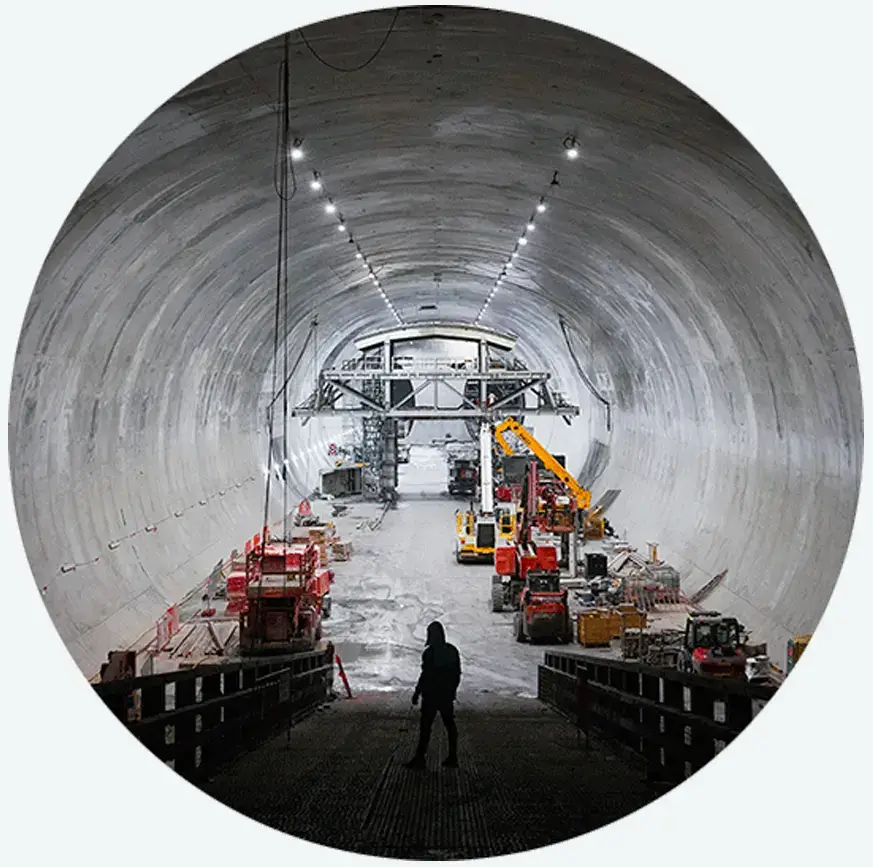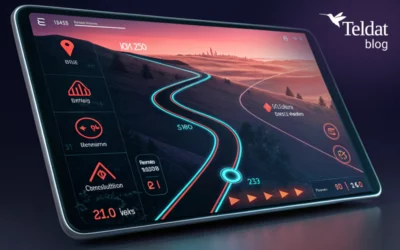Teldat Rolling Stock Equipment & Solutions
Ensuring secure, high-performance communications in rolling stock under harsh environments is no small task. Finding a supplier who offers the right products and expertise is crucial.
Understanding Rolling Stock digitalization
Train operators are increasingly adopting a rolling stock digitalization strategy to stand out in the highly competitive public transport market. The right digitalization technologies not only improve the passenger experience, drawing more customers, but also reduce operational costs by enhancing maintenance efficiency.
This digitalization relies on dependable, secure ground-to-train communications to avoid unplanned stoppages, associated costs, and reputational damage. Reliability is ensured through multi-WWAN capabilities such as 4G, 5G, and trackside Wi-Fi. Satellite connectivity also serves as a crucial backup, ensuring high availability and preventing service disruptions. In an environment where multipath networks are essential, intelligent SD-WAN technology facilitates efficient and secure remote WAN management. With SD-WAN, operators can implement Quality of Service (QoS) and end-to-end Service Level Agreements (SLAs) to control jitter, packet loss, and other network issues, ensuring encrypted and well-managed data traffic.
Market research indicates that the digital railway sector is set for significant growth, with projections for strong revenue and a double-digit compound annual growth rate (CAGR) from 2023 to 2032. One driving force behind this expansion is the cost effectiveness of train travel compared to flying. More importantly, railways are considered more environmentally friendly, consistently producing lower CO2 emissions than other means of transport, both for long-distance travel and local urban commutes. Substantial public and private investments (such as the European Recovery and Resilience Plan and the Next Generation plan) are fueling the expansion and modernization of railway networks and IT infrastructure, both trackside and onboard. These funds also support the implementation of government regulations aimed at improving security, predictive maintenance, and operational efficiency, which will reduce costs and prevent accidents.
These investments will also enhance the passenger experience with better Internet connectivity, more accurate scheduling, and optimized planning. Such improvements hinge on the integration of new technologies like distributed sensors, IoT edge points, and AI-powered data processing and analytics to optimize decision-making processes.
However, as these technological networks expand, the risk of security threats and breaches increases, whether from accidents or malicious agents.
The railway industry is one of the most security-critical sectors, where the protection of assets, staff, and passengers is paramount. However, the complexity of the Train Communication Network (TCN), which integrates equipment from various providers (mostly operating on open systems and standardized protocols), exposes the entire system to a wide range of vulnerabilities and cyber threats.
This complexity and exposure are further heightened when considering the various levels of communication systems managed by the TCN, including:
- The critical European Train Control System (ETCS), responsible for overseeing train movement.
- The Train Control and Management System (TCMS), which centralizes data from operational peripherals—referred to as “Intelligent” equipment—installed on the train
- The onboard communication systems that enable passengers to access entertainment, browse the Internet, or receive passenger information.
Each of these systems is vulnerable to different types of cyberattacks, requiring distinct countermeasures through preventative and detective actions.
Security measures vary based on the type of communication, the nature of the data, and its level of criticality. By segmenting the different LANs with stateful firewall policies, encrypting traffic, and implementing Next Generation Firewall (NGFW) rules for threat detection and prevention, data and communication integrity can be maintained. However, the digitalization of rolling stock also includes onboard routing and access point equipment that provides Wi-Fi services to a high volume of passengers. To manage this, Network Access Control (NAC) systems, such as those applied through Captive Portals, are essential for regulating user access and preventing unauthorized logins. Web filtering tools are also necessary to establish protective barriers, preventing access to undesirable websites, protecting against improper use of public content, and defending against hackers and virus propagation. Failing to address these issues can severely damage the reputation of train operators.
Security is equally critical on the wayside, where SD-WAN policies play a key role. These policies employ point-to-point encrypted communications to safeguard the train network infrastructure from attacks such as WLAN interception, unauthorized device connections, unwanted traffic propagation, or malware downloads.
Lastly, security is tightly intertwined with regulatory compliance. In addition to implementing the security measures mentioned, all onboard communication equipment must meet the required railway certification standards for hardware (addressing factors like temperature, environmental conditions, and fire/smoke safety), as well as software and process standards.

Hardware Solution & Teldat Products for Rolling Stock Digitalization
The background
The rolling stock market increasingly demands enhanced connectivity and onboard security to improve operational efficiency, reduce maintenance costs, and elevate the customer experience. This includes providing better services such as Internet access, content streaming, and gaming.
Teldat’s product range offers a comprehensive solution to the challenges of rolling stock digitalization. Our hardware is built on cutting-edge technologies, including 4G, 5G, and Wi-Fi 6, ensuring reliable connectivity that strengthens Teldat’s brand and reputation in the market. With multichannel load balancing and aggregation techniques, our routers can manage up to four cellular streams simultaneously, each from a different Mobile Network Operator (MNO).

Additional streams from external sources, such as satellite communications or trackside Wi-Fi, can also be seamlessly integrated, making the device ideal for any application where reliable connectivity is crucial. For environments focused on operational efficiency, Teldat’s routers can be equipped with a Tensor Processing Unit (TPU) for real-time AI-based edge computing and analytics. These routers can process data form sensors distributed throughout the train, monitoring parameters like passenger environment (CO2 levels, temperature, and humidity), door vibrations, seat occupancy, and more.
In situations where onboard offloading connectivity is critical, Teldat’s Access Points manage Wi-Fi HotSpots, enabling Internet access in high-density passenger environments. These devices ensure uninterrupted service and top-quality performance at all times.
Security is upheld at the highest level with the latest WPA3 standard, while user experience is enhanced through simultaneous dual-band transmission (2.4 GHz and 5 GHz) supporting up to 802.11ax (Wi-Fi 6) standards.
All Teldat equipment is ruggedized, fully compliant, and certified to withstand the harsh and demanding conditions of train environments. Our devices are built to endure extreme vibrations shocks, and temperature fluctuations, as well as high humidity (EN50155), while also meeting fire and smoke resilience standards (EN45545).
H5-Rail Platform
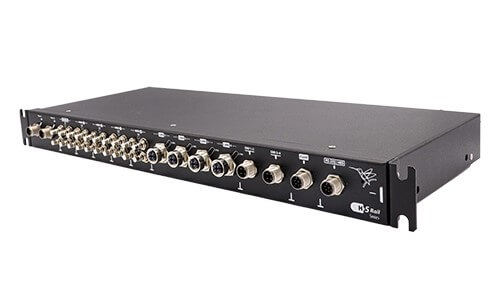
The H5-Rail platform is Teldat’s flagship solution, a ruggedized multi-service communications platform designed specifically for the onboard rolling stock market. It has been developed to meet the growing demand driven by the evolution of WWAN technologies and the need for greater bandwidth and capacity. This modular router is capable of managing up to four concurrent 5G-NR streams from different Mobile Network Operators (MNOs), ensuring the most reliable ground-to-train communication possible. Additionally, each 5G cellular modem supports dual SIM technology, providing fallback connectivity to a secondary MNO if the primary one is unavailable.
For added flexibility, each modem includes an embedded eSIM, allowing remote MNO switching for operational efficiency, eliminating the need for manual, onsite adjustments.
The router also provides Wi-Fi 6 connectivity, which can operate in Access Point mode for Wi-Fi Hotspot service or Client mode to enhance ground-to-train connectivity in specific locations like depots or train stations. These data streams are continuously monitored and optimized through load-balancing and aggregation algorithms, minimizing communication disruptions.
The Teldat H5-Rail also features a four-port Layer-3 managed Ethernet switch, with data throughput capabilities of up to 2.5 Gbps, which can either connect to the train’s backbone network or manage its own LAN, linking peripherals such as access points and servers.
Additional capabilities include GNSS location services, providing real-time geolocation information for the train and enabling post-processing analysis of signal coverage, strength, or journey details for passengers. The GNSS, enhanced with dead-reckoning technology, allows location tracking even in areas with limited satellite reach, such as tunnels or urban canyons.
In terms of security, the H5-Rail complies with key railway standards, including EN50155 and EN45545. It is further protected by a Next Generation Firewall (NGFW) to detect and prevent cyberattacks, while also incorporating a dedicated TPU for real-time AI- based data processing.
H2-Rail platform

Teldat’s H2-Rail Router is a market-proven solution that has been deployed in thousands of trains worldwide, solidifying Teldat’s leadership in rolling stock communication systems. The H2-Rail serves as a versatile communication gateway for various onboard services, including CCTV streaming, ticketing systems, passenger information services, Internet access, and connectivity to IoT sensors distributed throughout the train.
With support for up to four concurrent LTE modules, the router enhances WAN resilience through multi-WWAN management, load-balancing, and channel aggregation. Its advanced link monitoring capabilities ensure reliable and resilient ground-to-train communication, essential for scenarios requiring critical communications. Additionally, the LTE modems feature dual SIM provisioning, enabling active and back up Mobile Network Operator (MNO) management.
The H2-Rail platform also includes a four-port Ethernet switch, providing seamless LAN connectivity and easy integration into existing onboard infrastructure.
It is further equipped with GNSS location services for real-time tracking, monitoring, and troubleshooting.
Designed to meet the stringent requirements of railway environments, the H2-Rail hardware complies with railway standards, including EN50155 and EN45545. It is built to withstand the harsh conditions and electromagnetic interference encountered in lightweight and high-speed trains or trams.
APR2044ax Wi-Fi 6 Access Point
Equipped with dual radio Wi-Fi 6 technology, the Teldat APR2044ax Wi-Fi 6 Access Point delivers superior performance for densely populated passenger trains. Designed to serve as a HotSpot for onboard Internet access, this Access Point can also function in Client mode to enhance WWAN connectivity in specific locations, such as trains stations or depots. The APR2044ax also includes Bluetooth support for IoT applications and can be managed through any Teldat WLAN controller (including H5-Rail or H2-Rail devices) or via Teldat’s cloud-based management solution.
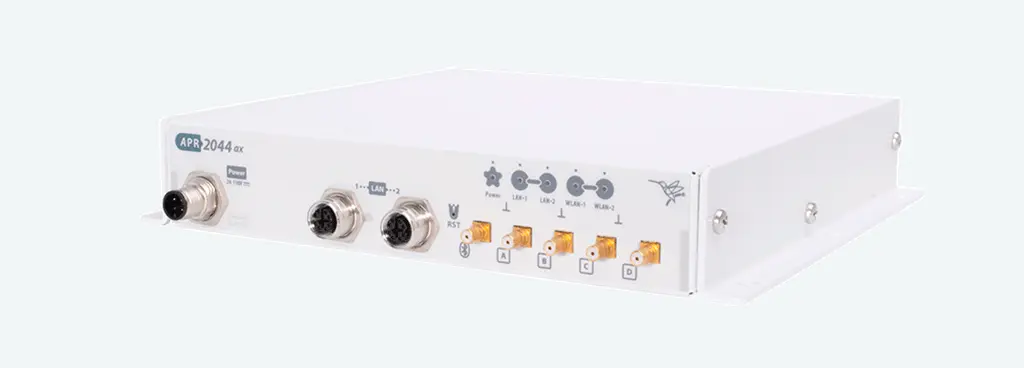
The device connects to the onboard LAN using two 2.5Gb Ethernet ports, both featuring PoE capabilities, eliminating the need for a nearby power source. With the latest WPA3 security standard, this Access Point ensures the highest level of security. Its high efficiency is achieved by combining Wi-Fi 6 technology with MU-MIMO 4×4, optimizing spectrum use.
The device transmits simultaneously in both the 2.4 GHz band at 1148 Mb/s and the 5 GHz band at 2402 Mb/s, using the 802.11ax standard. Fully compliant with railway standards, including EN50155 and EN 45545, the APR2044ax is rugged enough for deployment in the most challenging environments.
Software Solution & Teldat Products for Rolling Stock Digitalization
The background
The primary communication challenge for fast-moving rolling stock is ensuring the stability and reliability of the connection itself. In the IoT Automotive and Railway markets, Teldat has leveraged its extensive experience, built over years of investment and development in advanced network management technologies. By integrating advanced routing protocols with load balancing, aggregation mechanisms, and link monitoring capabilities, Teldat has established itself as a leader in the railway communication industry. Its trusted solutions are embedded in cutting-edge equipment, providing the most reliable and resilient ground-to-vehicle communication and onboard Wi-Fi hotspots.
Cybersecurity is equally crucial in the rolling stock industry. Teldat plays a significant role by developing its own cybersecurity solutions, ensuring that onboard systems are secure and safe.
This enables train operators to protect their assets, staff, and customers while providing a safe and enjoyable travel experience. Another major challenge for train operators is improving operational efficiency. Teldat addresses this by focusing on Artificial Intelligence (AI) algorithms, incorporating Machine Learning and data analysis technologies. These innovations create smarter, more efficient systems, enabling new applications and improving the functionality of management control suites.
As a result, maintenance costs are reduced, and operator revenues are increased, all while enhancing passenger comfort and optimizing preventive management.

CNM Suite and Mobility
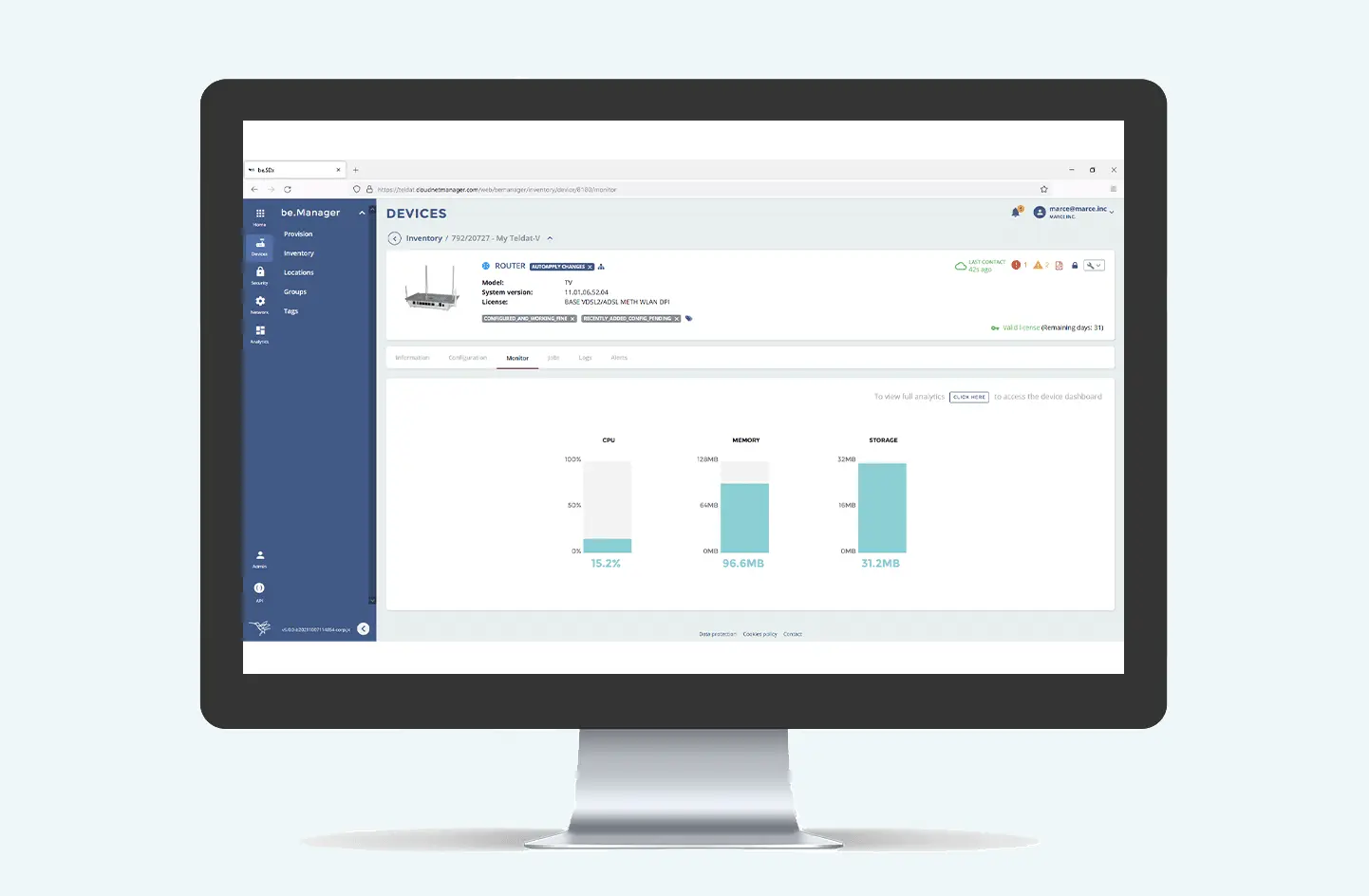
The Cloud Net Manager (CNM) suite provides a comprehensive set of licensed tools for remotely managing and controlling all Teldat devices, whether from a centralized data center or a personal laptop. With Teldat’s full SD-WAN capabilities and integrated security measures to prevent cyber intrusions, CNM ensures secure and efficient remote management. It streamlines inventory management through zero-touch deployment and facilitates the scheduling of large-scale operations, significantly reducing the need for manual intervention and boosting operational efficiency. Additionally, CNM functions as a WLAN controller, managing onboard WAN networks and controlling user access via RADIUS profiles.
It also enables users to monitor device and WAN line statuses, alongside WLAN performance, to better understand system behavior and improve troubleshooting processes through detailed data correlation. With its Mobility tool, CNM gathers real-time mobility information, including vehicle location, signal coverage and quality, bandwidth usage, and data consumption.
This data provides insights into network performance and allows for post-processing analytics.
be.Safe essentials
be.Safe essentials serves as the first layer of security for Wi-Fi Hotspot users, offering a critical complement to WAN solutions by adding content filtering, malware protection, and detailed analytics for WAN usage.
It allows trains operators to set up Navigation and Internet Usage Policies, minimizing risks associated with inappropriate Wi-Fi use that could harm the operator’s reputation. By filtering access to unwanted websites and blocking malware or viruses from entering passengers’ devices, it enhances the safety of onboard networks.
This tool also delivers in-depth analytics and productivity insights for post-processing analysis. Additionally, be.Safe essentials is omni-channel, user-friendly, and compatible with hardware from any vendor.

be.Safe Pro
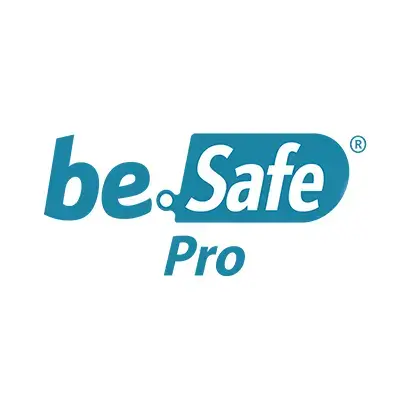
When cybersecurity is critical, be.Safe Pro is Teldat’s Next Generation Firewall Solution, offering robust protection across rolling stock, datacenters, and cloud environments.
This advanced security solution provides comprehensive 360-degree protection, including advanced IDS/IPS, SSL decryption, threat extraction, sandboxing, antivirus, DoS prevention, application control, and many other essential security features.
be.Safe Pro is deeply integrated with Teldat´s SD-WAN and hardware, delivering a user-friendly interface that simplifies the management of cybersecurity policies and communications. It adds an extra layer of onboard communications security by implementing state-of-the art NGFW protection, ensuring a high level of threat detection and firewall capabilities.
Onboard Artificial Intelligence (AI)
While Teldat CNM is the base for providing operational efficiency to train operators, Artificial Intelligence (AI) takes this optimization to the next level, driving further digitalization across the railway value chain.
The Teldat H5-Rail product is equipped with dedicated Tensor Processing Units (TPUs), allowing AI algorithms to run independently from the network routing functions. By leveraging Machine Learning techniques, this device transforms into an autonomous edge computer capable of processing and responding to external stimuli in real time. Basic use cases in the rolling stock industry include passenger counting, visual detection of unwanted objects, and real-time intermodal information.
However, the potential for generative AI extends to numerous other scenarios. For instance, IoT sensors throughout the train can provide data for predictive and decision-making algorithms, enhancing onboard security and enabling immediate reactions to various situations.
Generative and Analytical AI open new opportunities for the railway sector, improving passenger experiences, journey planning, and overall operational efficiency.

Hotspot – WiFiGo
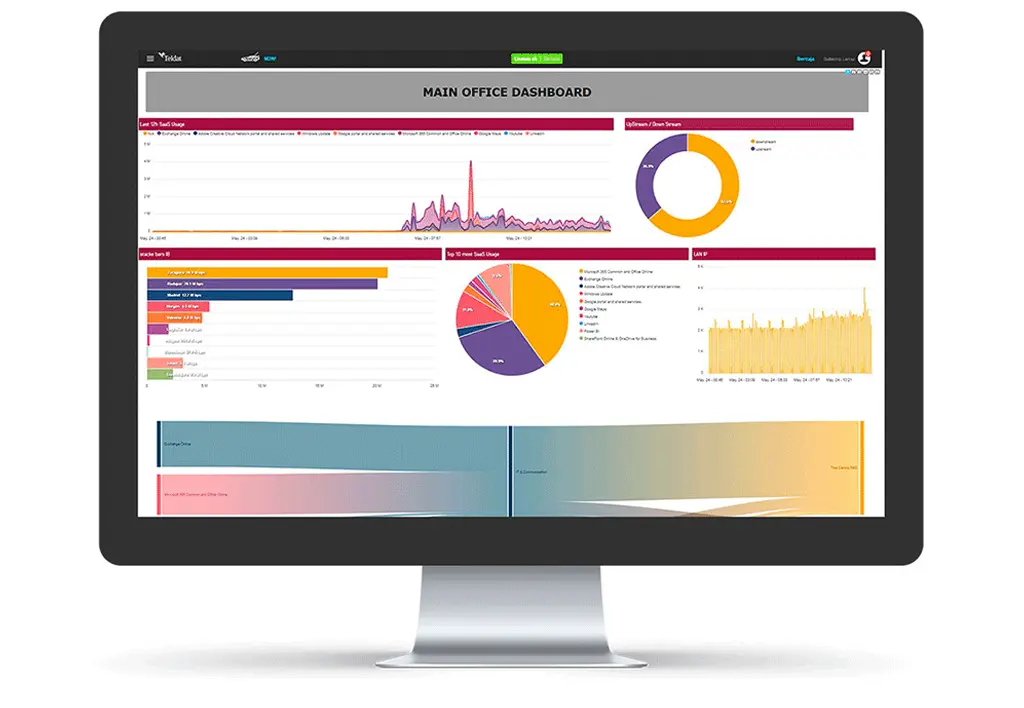
Teldat HotSpot is the premier solution for providing internet access via wireless technologies to occasional client devices over specific time periods. It combines flexibility, ease of use, and robust security with value-added functionalities, ensuring that users can connect to the onboard Wi-Fi network both safely and conveniently. As an access control system, Teldat HotSpot enables companies to engage with users each time they connect through a captive portal.
Complementing this, the WiFiGo platform offers the WiFiGo Cloud Management Tool, allowing customers to customize Captive Web Portals, generate detailed reports, and assign various profiles to users. This customization enables the creation of tailored rules for targeted marketing campaigns and the establishment of a personalized browsing experience.
Teldat Use Cases
Steady evolution in communications technology, and increasingly sophisticated software networking components and tools, can give rolling stock manufacturers and integrators a real competitive edge. View our Use Cases and Case Studies for real-world examples of how the technologies are being applied.
Case Studies
Read our latest Blog Posts
Dead Reckoning on how to improve road transport navigation
Dead Reckoning is the process of calculating the current position of an object based on estimates. Despite its origins in seafaring, it can have a significant impact on road transport. In a world dominated by GNSS technologies, understanding the implications of Dead...
On-board railway technology developments focusing on AI
In most productive sectors, artificial intelligence (AI) has become a key in transforming processes and optimizing business resources, making them more agile and efficient. This path towards modernization revolutionizes our life habits, as well as the technology...
The role of communications in the mining sector
In complex mine scenarios, where machinery roars, dust rises and darkness reigns, communications become essential tool to shine light on safety and efficiency. Not only that, but they support coordination, decision-making and the well-being of workers. For instance,...






